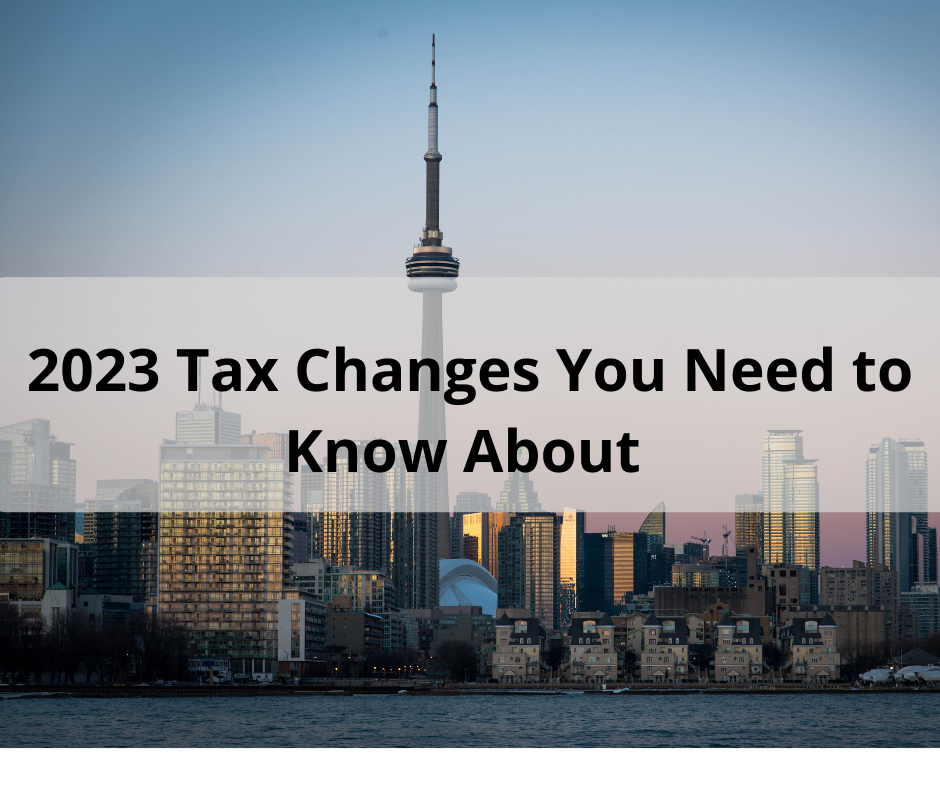There are several tax figure changes for 2023 that may impact you and your finances. We have rounded up the key changes to keep in mind:
- Tax Brackets
The inflation rate to index the 2023 federal tax brackets and amounts will be 6.3%. This results in the following new federal tax brackets:
|
$0 – $53,359 |
>$53,359 – $106,717 |
>$106,717 – $165,430 |
>$165,430 – 235,675 |
>$235,675 |
|
15% |
20.5% |
26% |
29% |
33% |
Each province will also have their own indexation factors for their tax rates.
- Basic Personal Amount
The Basic Personal Amount for an individual’s tax return has been increased to $15,000. After 2023, it will be indexed to inflation.
- CPP and EI Contributions
The Canada Pension Plan (CPP) contribution rate for 2023 is 5.95% with maximum contributions by employees and employers set at $3,754.45. This is based on the new yearly maximum pensionable earnings of $66,600 (with a $3,500 basic exemption). For self-employed Canadians who must contribute twice the amount, the maximum CPP contribution for 2023 will be $7,508.90.
Employment Insurance (EI) premiums will see a contribution rate for employees of 1.63% up to a maximum $1,002.45 on insurable earnings of $61,500.
- TFSA and RRSP Limits
The Tax-Free Savings Account (TFSA) limit for 2023 will be $6,500.
The Registered Retirement Savings Plan (RRSP) dollar limit for 2023 is $30,780. Keep in mind the amount you can contribute will depend on your 2022 earned income and adjustments.
Depending on your situation, you may also be interested in learning more about some new initiatives in 2023, including the First Home Savings Accounts or the Anti-flipping rules for residential real estate.
If you have any questions about how the changes above may impact you, please reach out to us.
